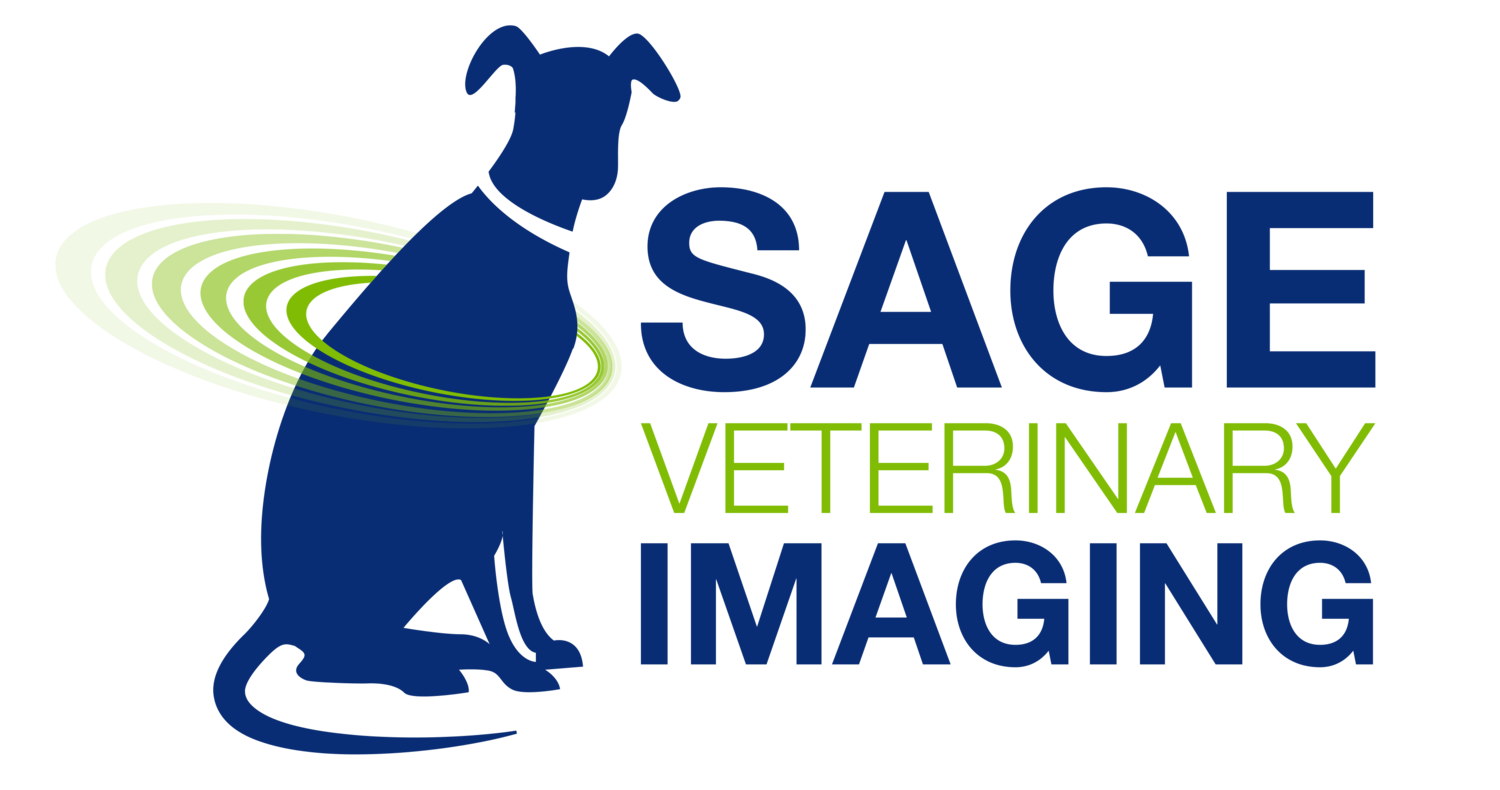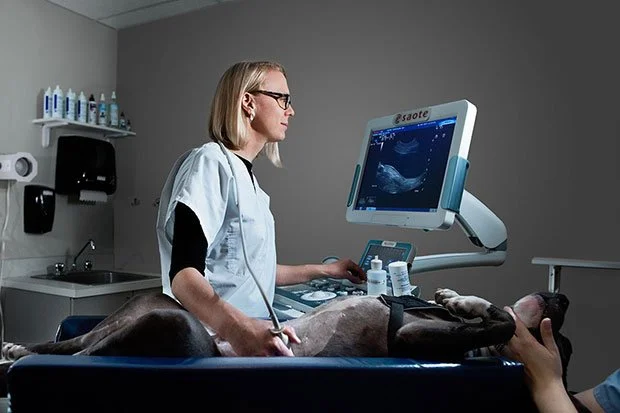FAQ: What is a veterinary ultrasound, and why use one?
A veterinary professional performs an ultrasound exam on a relaxed dog to capture real-time images of internal organs. Photo Credit.
A veterinary ultrasound is a gentle, noninvasive way to look inside your pet’s body — without radiation, discomfort, or recovery time.
The ultrasound machine sends sound waves into the body through a small handheld probe. Those sound waves bounce back as echoes, which the machine turns into real-time images of your pet’s internal organs. The process is completely safe — the sound waves are far above the range of human or animal hearing and have no harmful side effects.
Ultrasound helps veterinarians evaluate the structure and health of internal organs, including the:
Liver
Spleen
Kidneys
Adrenal glands
Gallbladder
Urinary bladder
Lymph nodes
Digestive tract
Heart
Thyroid glands
Other soft tissues
Because it’s quick, comfortable, and highly informative, ultrasound is often one of the first steps toward finding clear answers about your pet’s health.

